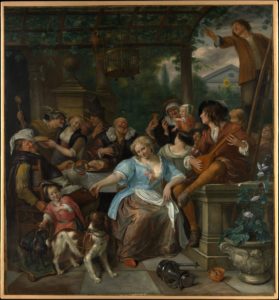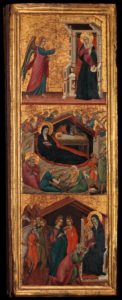I took my visit to the Metropolitan Museum of Art on Sunday December 2nd. Due to the fact it was the weekend and during the beginning of the holiday season, it was crowded with locals and tourists alike. Despite that, it was easy to notice that the Met is a work of art in itself both inside and outside. I visited with someone who had an art assignment to complete from a different class. Within the museum some of my favorite exhibits were the ones that focus on East Asian cultures such as “Children to Immortals” and “Japanese Arms and Armor from the Collection of Etsuko and John Morris”. I also liked the Ancient Egyptian exhibit focusing on the afterlife.
Within the Renaissance exhibit were many paintings of religious imagery and iconography. Many images were filled with the depiction of Mary and Jesus, representative of the influence of the Catholic Church on Europe. This religious imagery was less realistic than that of the Baroque Era. It was filled with brighter tones, colors and designs representing royalty. Its symbolic imagery such as halos and thrones represented the deeper meaning behind certain religious stories. Renaissance paintings for the most part favored more of a symbolic approach instead of a realistic one when it came to religious paintings, ignoring the move toward realism.
By the Baroque Era, the move toward realism had taken over even the religious paintings of Europe. As contrasted below, the Baroque Era favored a darker, more realistic color scheme as well as more realistic depictions of people. It placed its symbolism on the lines of symmetry between the subjects of the artwork. The Baroque Era’s realism also led to less of an emphasis on religious artwork. The difference between these two eras are shown in “Merry Company on a Terrace” by Jan Steen (1670) above and “Saints and Scenes from the Life of the Virgin” by Master of Monte Oliveto (1320) below.




